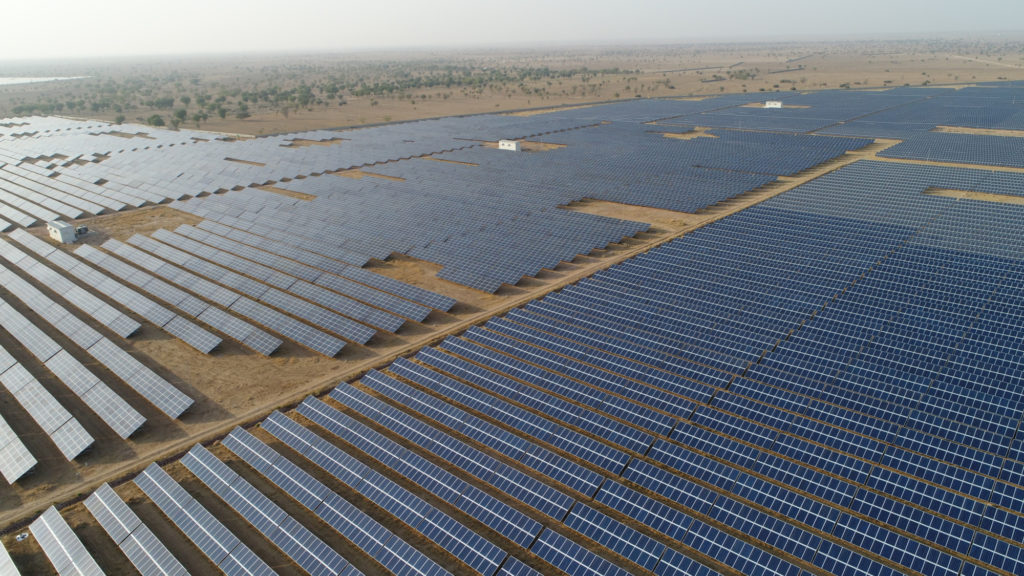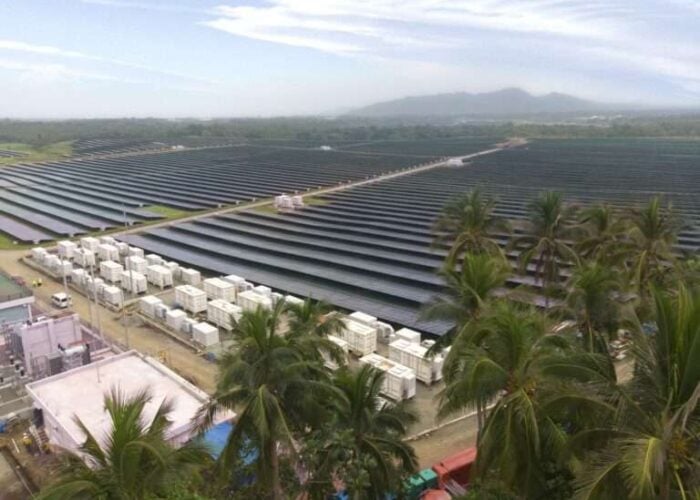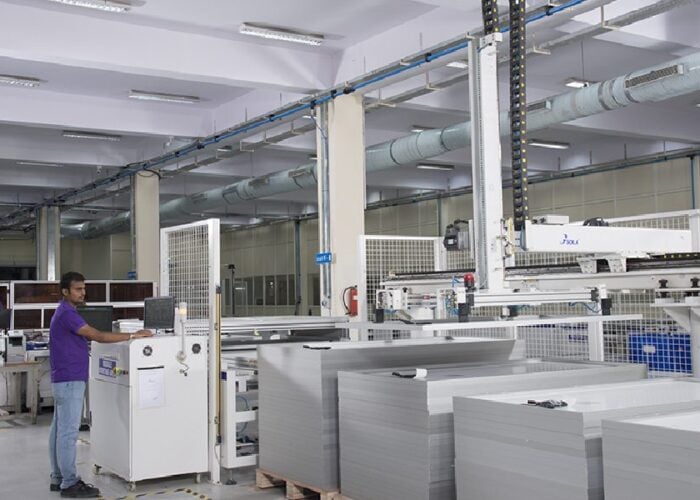
With high levels of irradiance, a deep desire to decarbonise and a lofty deployment target championed by a newly elected Prime Minister, India emerged in the mid-2010s as one of the hottest solar markets in the world. But fast forward five years and there’s almost a sense of missed opportunity.
Of the 100GW of solar PV Narendra Modi pledged to see built in India by 2022, the general consensus is the country will actually see around two-thirds of that figure built. Despite the target almost certain to be missed, it has not dampened enthusiasm for renewables from within Modi’s government. That 100GW ambition has been superseded by a new target, for 450GW of renewables – 300GW of it solar – to be operational by the end of this decade. Such deployment would see India become a global renewables powerhouse. Recent analysis of that target by the Institute of Energy Economics and Financial Analysis (IEEFA) found that around US$500 billion of investment would be needed for India to hit target – US$300 billion for generation, US$150 billion for transmission and distribution initiatives and a further US$50 billion for grid stabilising technologies such as energy storage.
Unlock unlimited access for 12 whole months of distinctive global analysis
Photovoltaics International is now included.
- Regular insight and analysis of the industry’s biggest developments
- In-depth interviews with the industry’s leading figures
- Unlimited digital access to the PV Tech Power journal catalogue
- Unlimited digital access to the Photovoltaics International journal catalogue
- Access to more than 1,000 technical papers
- Discounts on Solar Media’s portfolio of events, in-person and virtual
But for that to happen, India will have to overcome numerous issues which have served to stymie solar installations in the country and dent investor confidence. Distribution companies, or DISCOMs, continue to plagued by financial difficulties and government efforts to find a more permanent solution have so far failed. As a result, power producers in the country face delayed payments.
Investors have been further dissuaded by attempts to renegotiate, or in some cases entirely renege on, power purchase agreements. While this is nothing new, that the practice continues has created a sense of trepidation. In February 2021, India’s federal government stepped in to mediate after the state of Gujarat sought to scrap the results of a tender for a 700MW solar project struck previously and relaunch the tender, citing the fact that tariff prices had fallen considerably since the previous award.
Equally, there remains considerable scrutiny over the country’s domestic solar manufacturing landscape, with Modi’s government’s ‘Make in India’ pledge established to push the use of domestic wares wherever possible. Safeguard duties on imported modules had been in place since 2018, but were extended for a further year last summer, lasting until 29 July 2021 at least. An additional basic customs duty (BCD) – said to be at 20% initially, rising to 40% – has also been proposed, and was once said to be introduced alongside the safeguard duty. But, despite assertions that the BCD was to come into place last summer, the date for its implementation came and went, and the Indian government has yet to provide any further details, at least publicly, about its introduction. A surprise increase of the import tax attached to solar inverters, included within the country’s recent budget, has further moved the goalposts for developers, and created yet more uncertainty at a time when installations have stalled.
COVID-19 also presented India with fresh challenges throughout 2020. Developers struggled to mobilise labour and supply chain issues were also felt throughout India, leading to dwindling deployment. In Q3 2020, just 853MW of solar generation was installed in India, according to Bridge to India analysis, less than half the 1,743MW of solar installed in the corresponding period in 2019. The impact of the pandemic was felt more strongly in Q2 2020, when just 351MW was installed.
And yet, as Vinay Rustagi, managing director at consultancy Bridge to India says, investors have continued to flock to the country, and India remains at the forefront of any discussion surrounding solar’s leading markets.
PV Tech Power: India faced a challenging 2020, as did most markets, with delays caused by COVID and regulatory uncertainty clouding development. What’s the current status of the Indian solar market?
Vinay Rustagi: As a matter of fact, the last two to three years have been a pretty challenging time for the industry. There are several factors including unsigned PPAs, delayed payments from power purchasers, extra costs, to rising module and metal prices contributing to tough times. Coming on back of this, COVID has obviously not helped. The main challenges that the sector faces are, firstly, that power demand in India has been lukewarm and has not grown as rapidly as expected. That has restricted demand for renewable power. There are around 19,000MW of projects with completed auctions but unsigned power purchase agreements. This has been a major concern for the sector.
Secondly, distribution utilities, typically state government owned, are in a perilous financial condition. Their performance has been deteriorating over time for many reasons including political interference in tariff determination and poor network efficiency. In COVID times, they’ve not been able to pass on cost rises to customers and their own payment collections from customers have also suffered badly. As a result, payment delays to IPPs have been increasing sharply and are now at all time high levels. Then there are some distribution companies looking to get out of some contracts.
In addition, the government has imposed duties on modules to support domestic manufacturing. In the latest budget, duties on inverters have also been hiked and developers have to bear the extra costs. While there is a regulatory mechanism for them to pass on some of these extra costs back to the offtakers, the mechanism does not work very well and saddles developers with high working capital requirements as well as reduced profitability.
Despite all this, the market remains very competitive and tariffs continue to come down. In 2020, capacity addition for the solar sector was at a five-year low, but 2021 should be a much better year. We are expecting 13.5GW of solar capacity additions – 11GW utility scale and 2.5GW rooftop solar – which should be highly welcome. It would help ease some of the challenges faced by the sector in the last two years. All eyes are on the government, in terms of what kind of distribution sector reforms are introduced, hopefully to make things easier for the market.
13.5GW
Bridge to India’s forecast for solar deployment in 2021
And what would be the kind of ideal scenario for those reforms?
Just to give you an idea of the numbers, total outstanding amount to power purchasers is more than US$30 billion, and total estimated losses of distribution companies, in FY 2021, would be around US$80 to $90 billion. It’s therefore a massive problem.
The worrying thing, in my view, is that this is not a new problem. This has been a problem in the Indian power sector for as long as I can remember, going back perhaps to 30 years or more. In the past, the government has always tried to fix it by some kind of financial band-aid, which has kept the clock ticking for another five or seven years. What is different now is that size of the problem has become much bigger. The ability of government at the central or state level, in terms of their own fiscal constraints, to keep injecting more money is limited now. It seems implausible that another bailout package could be provided by the government.
We are now at the point where a long term, permanent fix is needed. The government has proposed various measures including, for example, cutting transmission and distribution losses from around 22% to 15% or less, tariff rationalisation and resetting, privatisation etc. But there is a lot of resistance from state governments, and the reform process is stalled in our view. More recently, the government has thrown another idea to open distribution sector to private players. So, consumers can choose from their existing DISCOM or other providers who would get access to the distribution network. It is a bit like what happens in the UK for example, where you can choose your [electricity] provider.
But we have also seen some warning signs that the government is backtracking on reforms in the face of opposition from consumer groups and states. For example, now privatisation is off the table and tariff rationalisation is also looking tricky. It remains to be seen if the government has the political will to go through the process.
Ultimately, it doesn’t really matter which approach the government takes, there will be a lot of hard painful choices for them to make. It would mean tariffs going up for customers, distribution businesses will have to become much more efficient and private sector would be allowed entry into the distribution business. The regulatory system will have to evolve, necessitating a long period of adjustment. The timing, however, is still not clear.
Is that uncertainty impacting the appetite of new entrants or existing players in investing in India’s solar market?
The answer to that is yes and no at the same time. It is having an impact in the sense that there is a staggering number of tenders which have been completed, projects have been awarded to developers but PPAs have still not been signed. Something like this is obviously draining market confidence. Everybody knows that the distribution companies are in a financial mess, and they are concerned about offtake risk. That is why central government owned companies like SECI [Solar Energy Corporation of India] and [utility company] NTPC are playing the role of intermediary procurers. There is heightened risk aversion and awareness of contract renegotiation and delayed payment risks.
“At the same time, quite remarkably, India is managing to attract huge investment into the sector.”
— Vinay Rustagi, Bridge to India
At the same time, quite remarkably, India is managing to attract huge investment into the sector. The large market size, transparent auction process and 100% FDI are attracting leading sovereign wealth funds, private equity funds, international utilities like EDF, Engie, Sembcorp to the sector.
Somewhat surprisingly, investment appetite has actually increased after COVID. We believe that partly it is down to reduction in interest rates all over the world. Cost of capital has come down and the amount of available investment opportunities has declined. Investors are also looking to jump on the energy transition bandwagon.
Is it perhaps leading to some kind of consolidation in the market, so you have the same few big names that are taking leading roles and most tenders?
It is something which has already been happening in India for some time. Aggressive bidding, increasing project sizes and various operational and financial challenges are naturally pointing to market consolidation. But we also continue to see many new players entering the market because raising capital for the renewable sector has seemingly been surprisingly easy. The industry is still relatively fragmented. High demand for assets is tending to push tariffs down.
There is this overhanging target of 100GW of solar by 2022. What’s the lay of the land there?
The solar sector has a two-year development cycle. So, we have a very good visibility of likely progress by 2022. At the end of 2020, India had total installed capacity of about 40GW Including rooftop solar. We expect 13.5GW addition this year and another 12GW in 2022. So, we’ll end up somewhere around 65GW by the end of 2022.
65GW
Bridge to India’s forecast for total Indian solar capacity by 2022, short of Modi’s 100GW ambition
What is the next step for Indian solar in that regard? Is there going to be any kind of further government push on solar?
The government is already looking ahead to 2030 with a capacity target of 300GW for solar and 450GW for all renewables.
On the manufacturing side, we have obviously seen this push towards domestic manufacturing. We’ve yet to receive clarity on the basic customs duty on modules, is there still an appetite for that?
This is a really hard problem for the entire sector. The Indian government has supported ‘Make in India’ in very strong language and backed it up with multiple policy support measures over many years. But the government seems torn between cheaper solar power and domestic manufacturing. Manufacturers are saying we need duty protection and without duties, there will be no Make in India. On the other hand, the developers and investors are saying that any push towards Make in India with duties would increase cost of solar power and reduce demand.
Safeguard duty was implemented initially for two years, and then extended for one year. The government has been talking about a basic customs duty over the next eight or nine months now. But the duty is yet to be announced and we just don’t know anything about the level or timeline for the duty. Lack of long-term visibility is a big deterrent for investors.
Meanwhile, the government has announced a production linked incentive (PLI) worth about US$650 million for Indian cell and module manufacturers. There are various project schemes contingent upon using only India-made cells and modules. Essentially, the government seems unsure yet it is throwing everything including demand support, financial subsidies and tariff barriers at Make in India. The overall policy is in a bit of a flux. Because of lack of a clear roadmap, progress remains pitiful and we believe that a large part of the optimism is misplaced. A lack of visibility over duties is also obviously a major risk for project developers.







